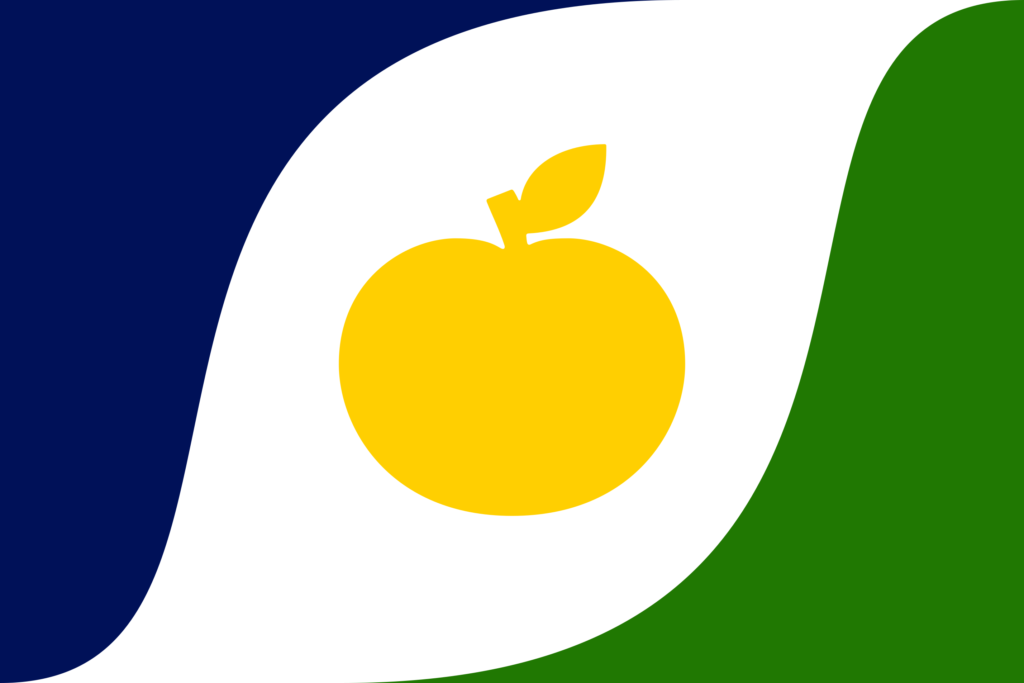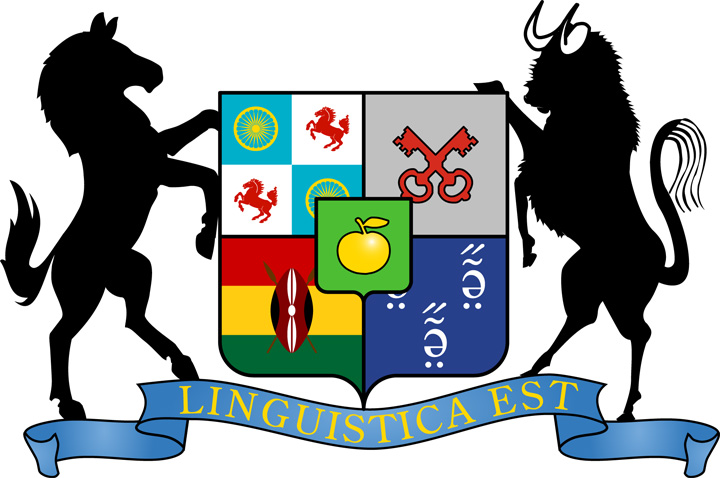Study Association T.W.I.S.T. has its own logo, flag, coat of arms, and anthem. All of these will be explained below.
Logo

T.W.I.S.T.’s logo is the golden Apple of Discord, as depicted above. The Apple of Discord originates in Greek mythology. The goddess Eris hijacks a wedding party by tossing an apple in the midst of the festivities, made of pure gold and inscribed with the text τῇ καλλίστῃ (tēi kallistēi, ᴅᴇꜰ.ꜰ.ꜱɢ.ᴅᴀᴛ beautiful.ꜱᴜᴘʟ.ꜰ.ꜱɢ.ᴅᴀᴛ, ‘for the most beautiful’). Three goddesses have a fight (also called a ‘twist’ in Dutch) over who has the right to receive the apple and be called ‘the most beautiful’. Eventually, it is decided that Paris may choose who will receive the apple. All of the goddesses offer him something in return, but Paris chooses Aphrodite, who promises him the most beautiful woman on Earth. Aphrodite receives the apple, and in return, Paris receives Helena’s hand in marriage. This is the start of the Trojan war, the war over Helena.
The golden apple from this myth has found its way into the Dutch language as the ‘twistappel’, which means: ‘a subject or matter over which disagreement exists’. In this association, however, the apple does not bring any disagreement. Instead, it symbolises the connection between its members.
Flag

In 2024, the T.W.I.S.T. flag recieved a revamp (original found here). In the centre the golden apple – symbol of the association itself – lays surrounded by white. On the edges of the flag, the two colour fields serve as a double-coding, highlighting our place in Leiden university, as well as calling back to the mythical goddesses involved in the feud over the golden apple that inspired the T.W.I.S.T logo in the first place: (olive)green for Athena, (pearl)white for Aphrodite and (peacock)blue for Hera. Additionally, the coloured fields cut out the white in the shape of a wug, the unofficial mascot of the field of linguistics. The flag was designed by the PromoCie committee of 2023-2024.
Coat of arms

The coat of arms of T.W.I.S.T. is a shield that consists of five different sections. Next to the T.W.I.S.T. apple – depicted in the smaller, central shield – there is a section dedicated to the symbol of Leiden, and three sections dedicated to each of the study programmes T.W.I.S.T. used to represent. The study programme Languages and Cultures of Africa is represented by an African shield, depicted on top of the three Panafrican colours. General Linguistics is represented by the IPA symbol which roughly depicts the sound of a wildebeest. Lastly, Comparative Indo-European Linguistics is represented by two sun wheels and two horses.
The motto Linguistica Est is the Latin translation of Taalwetenschap is ‘t! (Linguistics is it!), the association’s slogan, of which T.W.I.S.T. is the acronym.
AnTWem
T.W.I.S.T.’s AnTWem, in use since June 2025. The melody is a modified version of the previous AnTWem (found here), which was originally written by Alain Corbeau, later modified by Matea Haverlík. The lyrics were written by the 2024-2025 ComposiTie workgroup.


The voices heard in this recording are those of Fenna Berger, Marieke Pouw and Walt Kraeger.